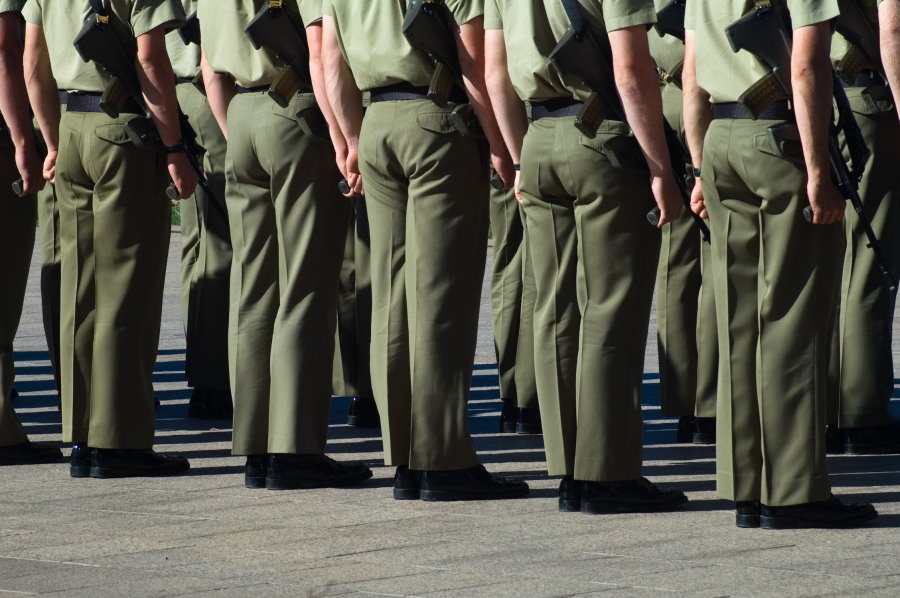Discover why your company could be missing out if you’re not actively looking at and pursuing Australian Defence Force tenders this year
In its recent Defence Strategic Review (DSR), the Australian Defence Force recently announced funding for the 2023-24 financial year has been set at $A50 billion.
A total of $52.559 million split between the Department of Defence and the Australian Signals Directorate and will continue to grow, totalling $223.6 billion over the four years of the forward estimates.
These levels of indicative funding, and with many projects put out to tender, show there will clearly be many opportunities for small & medium businesses to get their foot in the door and put forward tender proposals in the coming periods.
Insecurities in the Australian Defence Force industry
Inflation has seriously eroded Defence’s buying power, with a projected loss of around 8-10% due to higher inflation rates of 6% compared to the expected 2-2.5% per annum.
To address funding needs for the Defence Strategic Review and other priorities, Defence may need to make difficult decisions, including potentially cutting approved projects currently in contract and acquisition.
However, there is some hope for increased funding in the medium term, as the government has provisionally allocated around $30.5 billion in the Contingency Reserve for Defence.
What are the Defence’s major cost categories
The defence budget faces challenges with too many aspirations and not enough resources, leading to uncertainty for industry as the implementation of the Defence Strategic Review may involve cutting or delaying approved projects, despite a provision for increased funding in the Contingency Reserve beyond the forward estimates.
The major cost categories are –
Acquisition: $17,661 million (34.6 per cent)
The acquisition program’s growth is slower than predicted in previous budget statements, with some projects seeing decreased funding. Despite this, acquisition spending remains at around 33-34% of the total budget, providing the ADF with improved equipment.
The Hunter-class frigate program faces challenges in its ramp-up, and the budget introduces two new programs: Naval Shipbuilding and Sustainment, and Nuclear-Powered Submarines, which will be managed outside of the Department of Defence.
Operating (including sustainment): $18,516 million (36.3 per cent)
The biggest part of the Defence operating budget is the capability sustainment program, which shows continuous growth beyond earlier estimates.
The sustainment Top 30 looks familiar, and there are no signs of rumoured cuts to sustainment budgets, but potential changes may come later depending on the likelihood of conflict in the near term.
Workforce: $14,851 million (29.1 per cent)
This year, Defence’s workforce takes up 29.1% of the budget, but when factoring in contractors’ costs (which is under operating), it becomes closer to 34%.
While the government plans to increase public servants, the main challenge lies in the shortage of ADF personnel, with a need for around 18,000 more positions, while the growth rate has been slow, potentially hindering the operation of planned capabilities like the SSNs.
The changing responsibilities of the Australian Defence Force
For over thirty years, Australia’s military concentrated on addressing “lower-level threats” like terrorism and Middle East conflicts.
However, the Defence Strategic Review highlights a changing world, with China’s significant military build-up posing a challenge, and the proliferation of long-range precision strike weapons reducing Australia’s geographical advantage. The review emphasizes the need for Australia to adapt to these developments and avoid facing these challenges alone.
The Government says it’s DSR “sets the agenda for ambitious, but necessary, reform to Defence’s posture and structure”.
The review identified six priority areas for immediate action:
- Investing in conventionally-armed, nuclear-powered submarines
- Developing the ADF’s long-range strike capability, including manufacturing munitions in Australia
- Improving the ADF’s ability to operate from Australia’s northern bases
- Lifting capacity to rapidly acquire disruptive new technologies
- Investing in the growth and retention of a highly-skilled workforce
- Deepening diplomatic and defence partnerships with key regional partners
This is generating many different opportunities for Australian companies with products and services that may have previously not been considered suitable as Australian Defence Force suppliers.
If you are one of these companies, keep an eye on Austender, the website where all government tenders including Australian Defence Force tenders are anticipated (‘market sounding’) and published. Create your customised watchlist so you don’t miss an opportunity for your company.
The Defence website also lists opportunities for business and industry. It is worth checking out this page as it also includes industry training and events, capability programs, resources and support contacts, procurement and contracting as well as industry news.
If your organisation has now found an opportunity in a Defence tender, should you respond to it? Is your company able to meet the feasibility, risk and suitability of the range of capability criteria put forward by the defence tender?
AusTender: How To Find Your Next Government Tender
How do Australian Defence Force tenders work?
Defence Force tenders can be complex and challenging. Before you start considering and responding to Defence contracts, we recommend you acquaint yourself with and understand how Defence procurement works, the standards, and policies and what the tender process itself is.
Investigate the various contracting templates, taking the time to comprehend the policy documents and legislation that go with each tender.
Tender Evaluations can help here, so before you start give us a call to help you consider the criteria your company will need to consider to respond to a particular tender.
Expressions of Interest
Expressions of Interest (EOI) are how Defence Procurement screens potential bidders for future tenders.
For your organisation, this means that you must be able to say ‘yes’ to all the essential (or ‘mandatory’) criteria.
For EOIs, these criteria can include minimum revenues per annum (to gauge your company’s cashflow capabilities to support the delivery of contracts) and minimum standards for safety, quality, environment and risk management.
You must be able to prove all the major claims you make in responding to the Comparative Criteria. For EOIs, Comparative Criteria can include provable examples of recent, relevant contracts successfully delivering the same or similar services to those that Defence is seeking from industry.
Sometimes, EOIs ask for budgetary pricing: this is when Defence is either seeking accurate numbers to then request funding from Federal Government or to validate its previous estimates of the funding required.
Request for Tender
Request for Tender (RFT) and its variants are how Defence Procurement selects one – or sometimes two – organisations to deliver the services required.
For tenders, Essential or mandatory criteria can (and usually do) include minimum levels of insurances, acceptance of Defence Terms and Conditions (contractual terms) without major changes, and Service Level Guarantees.
Again, you need to be able to say ‘yes’ to those.
For tenders, Comparative Criteria are usually highly specific to the key risks that Defence Procurement is trying to minimise: for example, product or service specifications (solution risk), company commitment (company risk) key personnel (people risk), organisational structures (governance risk), bank guarantees (financial risk), collaborative approaches (relationship risk), delivery methodologies (operational risk) and so forth.
Again, you need to be able to prove every major claim you make.
And of course, there is final pricing.
How do you win defence contracts in Australia?
1) Not just the cheapest price will win the tender
The outcome behind each Defence tender is value for money. You need to convey how this value is translated to the costs and benefits of your company being selected in its tender response.
The Defence Force tender evaluators will consider your direct costs for fulfilling the tender but will also consider your indirect financial costs and benefits over the life of the procurement.
Other factors such as maintenance and running costs, the risks and warranties, quality of products and service, your fit for purpose solution, safety considerations, environmental and energy conservation, your capacity as a supplier, and the wider benefits to the Defence force as well as disposal costs.
2) A more innovative solution
A tender response providing new ideas, creative thinking with innovative solutions will be highly favoured – provided this does not increase risk for Defence. However, your solutions’ deliverability and dependability need to be communicated in the tender, as well as mitigating any risk associated with the innovation.
3) Reduced risk
Tackle risk upfront. Tender evaluators will be considering the relative risk of your tender, so communicate how your organisation will be mitigating risk. Better still, show evidence of how you have reduced risk in other client solutions.
A part of risk assessment is professional accountability – how is your organisation responsible for risk? Does your organisation currently have independent certification for quality assurance systems and processes? You will also need to document how your solution will be delivered on time, the processes that manage delays and issues.
4) Capability and capacity
These two often get confused. Capability in this context is taken as a track-record of successful delivery of same/similar services, qualifications of people, standards of processes (and/or systems), and intellectual property.
This differs from Capacity, which is seen as the number of resources (people, stock, finances, delivery) that your company will be providing within your tender solution.
5) Flexibility
Although your tender meets with the defence forces’ requirements, you also need to be able to communicate how your solution is flexible and able to adapt to possible change. This flexibility of your organisation can be demonstrated by your past experiences when adaptability was used, or through your employee resources when they responded to unforeseen changes with changes in methods and procedures.
6) What’s in it for Australia
A consideration for Defence Force tenders is adding value for Australia. Can your tender bring an advantage to Australia outside of the tender solution? Are there any flow on effects from your organisation winning this tender – such as creating jobs, stimulate a regional or rural area, protect the environment, gender equality, indigenous employment, leaving a legacy particularly in underprivileged areas.
7) Competitive advantage
What sets you apart from your competitors. Look closely at which organisations are likely to respond to the same tender. What offers do you think they will be making in their tender and better them?
8) Health, safety, quality and environment
ISO Standards in these areas is unusually crucial to success with Defence tenders. Examples of these include:
- ISO9001:2015 for Quality Management
- ISO 45001:2018 for Occupational Health and Safety Management
- ISO 45001:2015 for Environment Management
Tips for preparing your Defence Force tender response
If your organisation makes it to the tender presentation stage, choose your presenters carefully to convey a strong team in line with your positive tender solution. The presentation should focus on how your organisation’s specific capabilities match the tender criteria.
Be prepared for the Q&A sessions, the tender evaluators will throw some tough questions, which your team are expected to answer on the spot. As part of our tender presentation coaching, we specifically spend time going through all the questions the evaluators are likely to ask you and help you prepare answers to them. We have found that this is what throws many of our clients – and we practice and practice until you have confident presenters.
In summary
Australian Defence Force tenders, whilst lucrative can cost your company a lot of money and time. If your company is interested in responding to a Defence tender but you are not sure, contact Tender Evaluations today.
We can look at the tender and offer a free evaluation session to work out if this is the tender for you. Alternatively, we can look at other Defence tenders which may be better suited to your company. This is key to tender response, working out the correct ones to apply for a better win rate.

